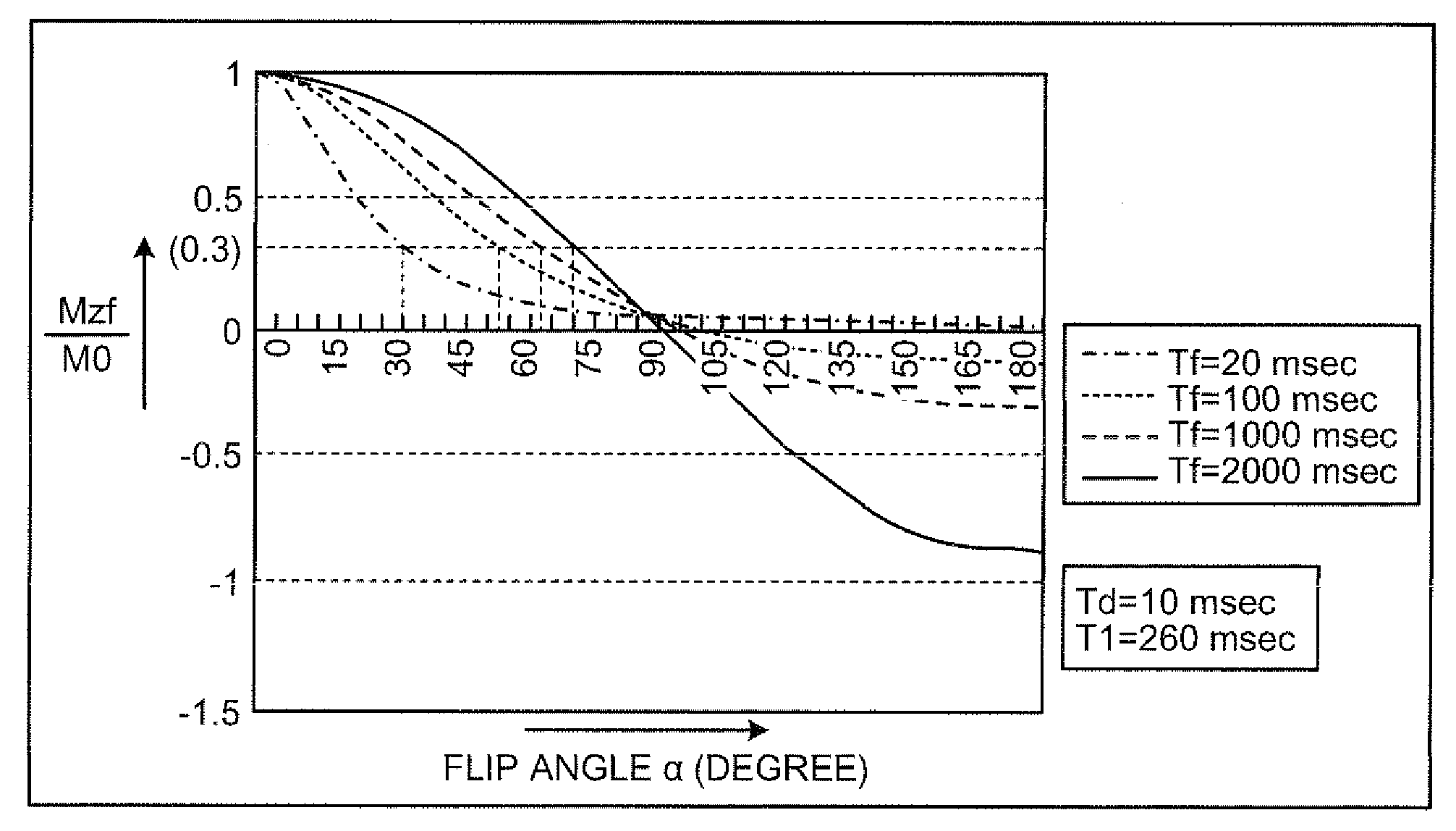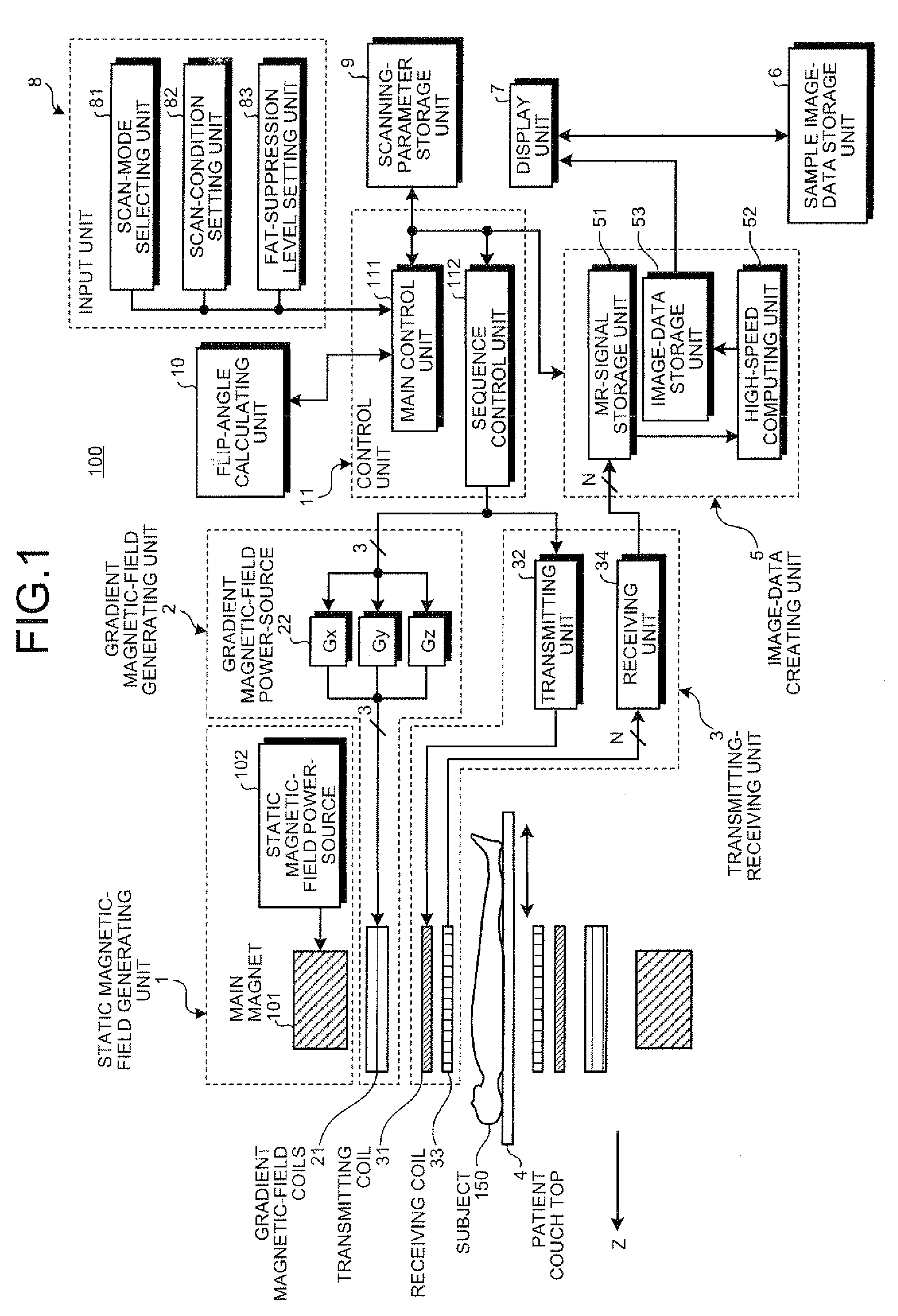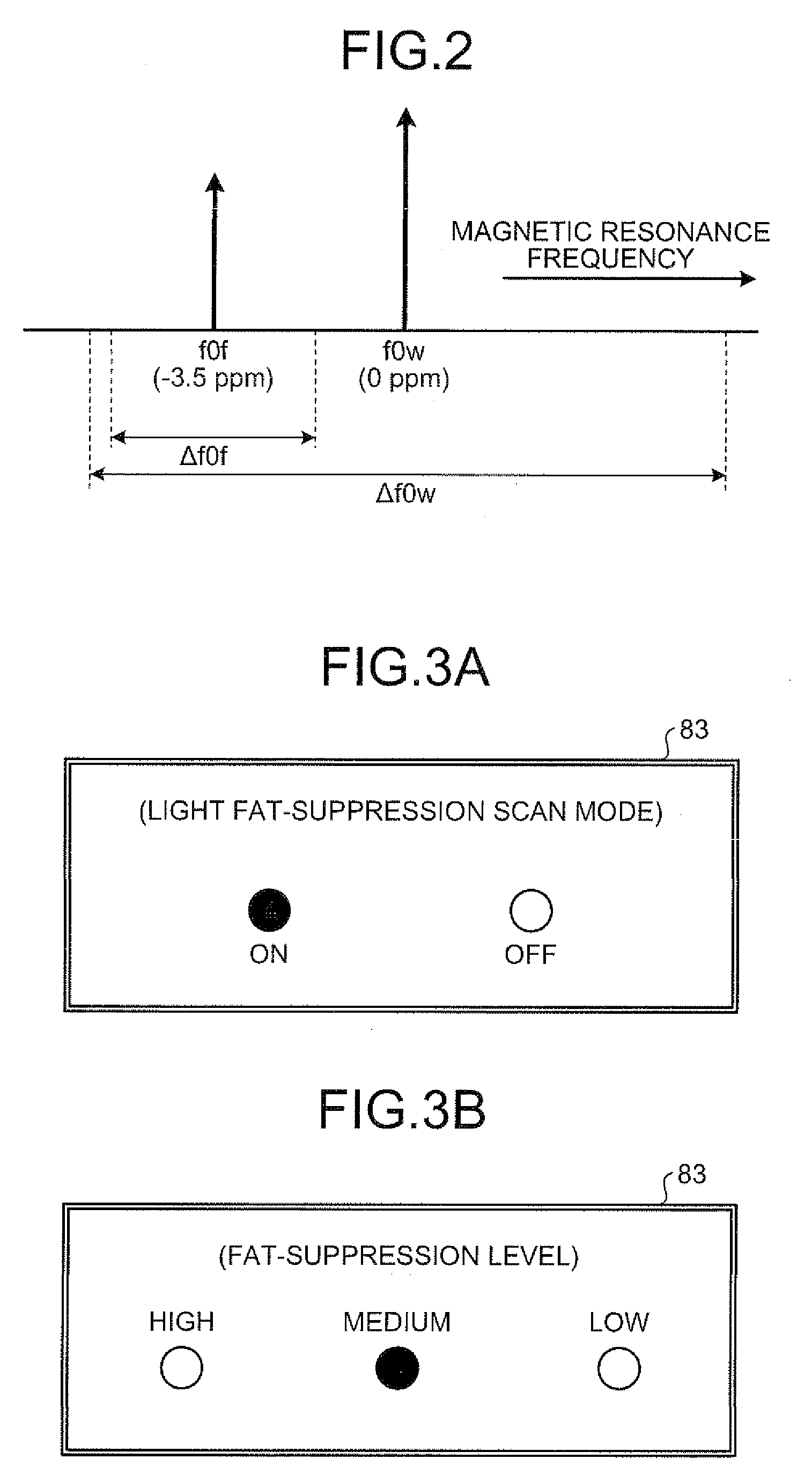MRI apparatus
a magnetic resonance imaging and apparatus technology, applied in the field of magnetic resonance imaging apparatus, can solve the problems of inability to achieve high-quality image data, inability to obtain high-quality images, and inability to accurately detect the presence of fat components in the bone,
- Summary
- Abstract
- Description
- Claims
- Application Information
AI Technical Summary
Benefits of technology
Problems solved by technology
Method used
Image
Examples
Embodiment Construction
[0030]Exemplary embodiments of the present invention will be explained below with reference to the accompanying drawings.
[0031]According to the following embodiments, first of all, a flip angle of a fat-suppression pulse is set based on scanning conditions of a Magnetic Resonance Imaging (MRI) scan to which a fat-signal suppression method is applied, and a fat-suppression level. Next, through a fat-suppression sequence aimed at suppressing a Magnetic Resonance (MR) signal generated from fat tissue (hereinafter, “fat signal”), a fat signal is suppressed to a desired level by performing irradiation of a fat-suppression pulse that has the flip angle and application of a spoiler gradient magnetic field onto a scan target portion of a subject. Then, through an MR-signal collection sequence following to the fat-suppression sequence, irradiation of a Radio Frequency (RF) pulse and application of a gradient magnetic field are performed onto the scan target portion in accordance with a certa...
PUM
 Login to View More
Login to View More Abstract
Description
Claims
Application Information
 Login to View More
Login to View More - R&D
- Intellectual Property
- Life Sciences
- Materials
- Tech Scout
- Unparalleled Data Quality
- Higher Quality Content
- 60% Fewer Hallucinations
Browse by: Latest US Patents, China's latest patents, Technical Efficacy Thesaurus, Application Domain, Technology Topic, Popular Technical Reports.
© 2025 PatSnap. All rights reserved.Legal|Privacy policy|Modern Slavery Act Transparency Statement|Sitemap|About US| Contact US: help@patsnap.com



